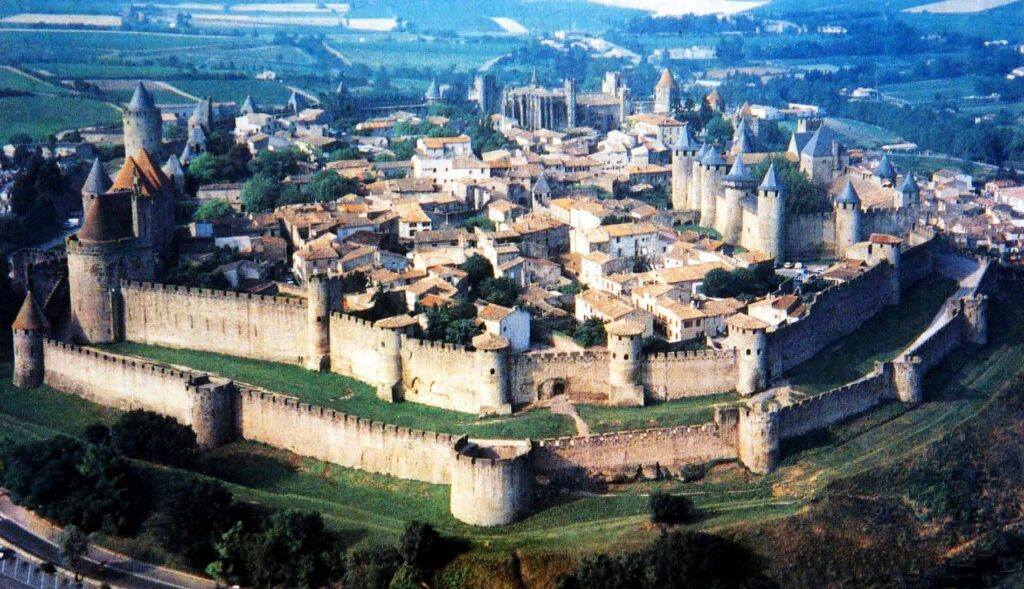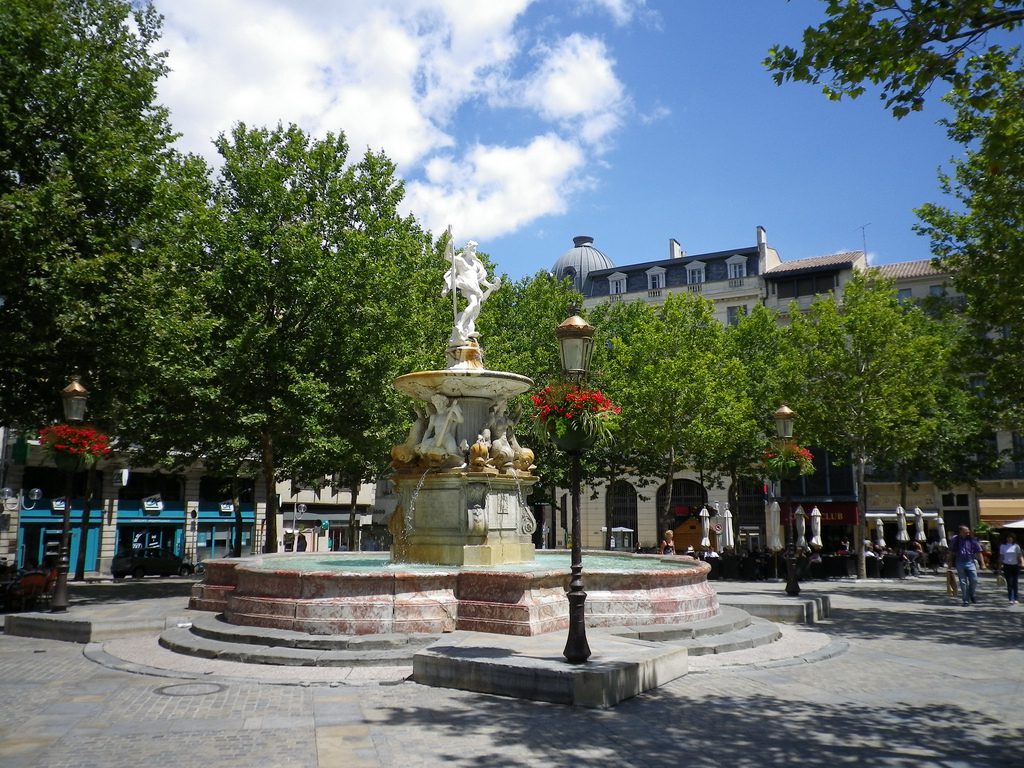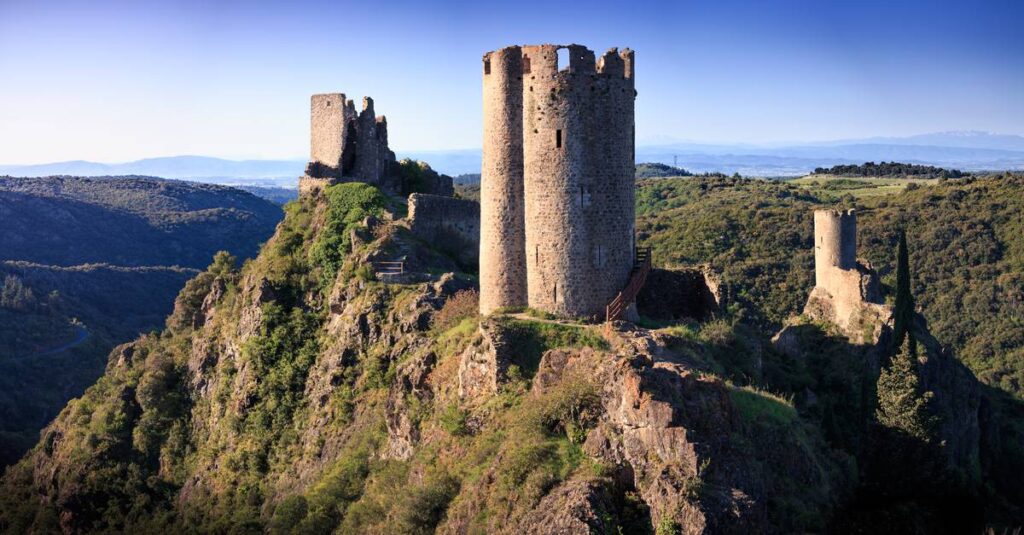Carcassonne Travel Guide
Introduction
Located right on the central Toulouse–Montpellier train link, visiting Carcassonne is a must for anyone traveling through the Languedoc region. Though popularly believed to be one city, Carcassonne comprises two towns, and this division is due to the war against the Cathars. Separated from the lively ville basse and the dramatic La Cité, Carcassonne is France’s second most visited destination after the Eiffel Tower. Its highlight is the double-walled and turreted fortress that crowns the hill above the River Aude, and from a distance, the fortified old town seems to be straight out of a fairy-tale medieval. Admission to the streets or the grassy lices – “lists” – between the walls is free in Carcassonne and cars are banned from 10 am to 6 pm. A guided tour is required to explore the inner fortress Château Comtal and walk the walls. The beautiful church of St-Nazaire, with its tranquil combination of nave with carved capitals in the Romanesque style and a Gothic choir and transepts, along with some of the loveliest stained glass in Languedoc, is also not to be missed. Climb the tower for the most spectacular views over the La Cité.
How to Get to Carcassonne
- By Car – Autoroute A61: Exit Carcassonne Ouest (n°23) – Exit Carcassonne Est (n°24), RD6113 ( Toulouse – Narbonne), D118 ( Limoux – Mazamet), D119 ( Pamiers). The distances are – Toulouse: 90 km, Montpellier: 150 km, Bordeaux: 340 km, Marseille: 320 km, Lyon: 450 km, Paris: 730 km, Barcelona: 300 km.
- By Train – Carcassonne is easily reachable by TGV from Dijon, Bordeaux, Toulouse, Lyon, and Marseille. Intercité and TER take you to nearby cities of Narbonne, Limoux, and Perpignan. Night trains coming to or from Paris also stop at Carcassonne train station.
- By Air – Carcassonne is well connected with most major European cities by Easyjet and Ryan Air. The nearest airport is Aéroport Sud de France Carcassonne.
Getting around
If you are staying in Carcassonne, then everything is within walking distance. La Cité (Medieval town) and La Bastide (lower town) are only 15 minutes apart from each way.
When to visit
Though summer is the liveliest time to visit Carcassonne, it is the peak season for tourism there. Go there either in autumn or spring, for quieter moments and beautiful change of season landscape.
Best Attractions in Carcassonne

Carcassonne is worth the visit. Nowhere in Europe is there a fortified medieval city that is as exquisitely preserved as the imposing La Cité, and it came with a tremendous heritage, too. Due to its strategic location, which is perched on the rocky outcrop overlooking the River Aude, Carcassonne has been much coveted throughout history. Historians believe that the town may have been fortified even before the Romans started building their walled citadels there, and the final touches to the magnificent fortified village are credited to Saint-Louis and his successor, Philip the Bold. They completed their architectural glory towards the end of the 13th century, and Carcassonne survived virtually intact until the mid-1800s, owing to the protection of the French military. In the last half of that century, the brilliant architect Eugéne-Emmanuel Viollet-le-Duc took up the prestigious project of restoring Carcassonne, and what we see today are the fruits of his hard labor.
La Cité (Old Medieval Town)
You can walk around the old town of Carcassonne in about 30 minutes but give it about 3 hours to enjoy the historic place to the fullest. Highlights include spectacular views of the Pyrenees, The Black Mountain, Bastide Saint Louis, and the lower town.
The Basilica of Saint Nazarius and Celus
Located inside the ramparts, it is a national monument whose architecture is inspired by the Gothic-Romanesque tradition. Complete with stained glass windows that filter and refract the beauty of the afternoon sun in an almost ethereal manner; it is an experience not to be missed. Go inside the Viscount’s Castle to take in medieval artifacts and explore the history of the region of Cathar. Ensure you are there before 4 pm to have at least an hour to get around.
La Bastide

Dating at least 4 centuries back, some old buildings of the lower town are from the 17th and 18th centuries. It is a lively place for relaxing, people-watching, and shopping for local produce. A little market is held on Tuesday, Thursday, and Saturday at the main square of Place Carnot. There are lively bars, restaurants, and cafes where you can relax in the main square. Take a short stroll from Place Carnot to the church of Saint Vincent. An epitome of Languedoc Gothic architecture on the outside, it has beautifully decorated interiors with paintings from Gamelin, Nicolas Mignard, and Pierre Subleyras. Enjoy the breathtaking views from the tower. The Fine Arts Museum is 10 10-minute’ walk from Church Saint Vincent and is a cultural must-see. It houses a collection of paintings and ceramics from the 17th century to the modern day and hosts three temporary exhibitions annually. Entrance is free.
The Canal du Midi
The canal port at Carcassonne is one of the busiest, and you can enjoy a half or whole-day canal trip from here. Renting a boat for a week or two is also possible. Have fun on a half-day trip by getting a picnic and floating down the tunnel of plane trees to the west towards Bram or east through Trèbes.
Château Las Tours
One of the most picturesque of the region’s Cathar castles lies in the undulating hills of the Haut-Minervois, around 20 minutes north of Carcassonne. Las Tour’s four towers sit along the spine of a mountain, just above a small village, and it is a very atmospheric place. On your way back, it is advisable to explore the pretty town of Caune-en-Minervois, with its medieval abbey and winding streets.











